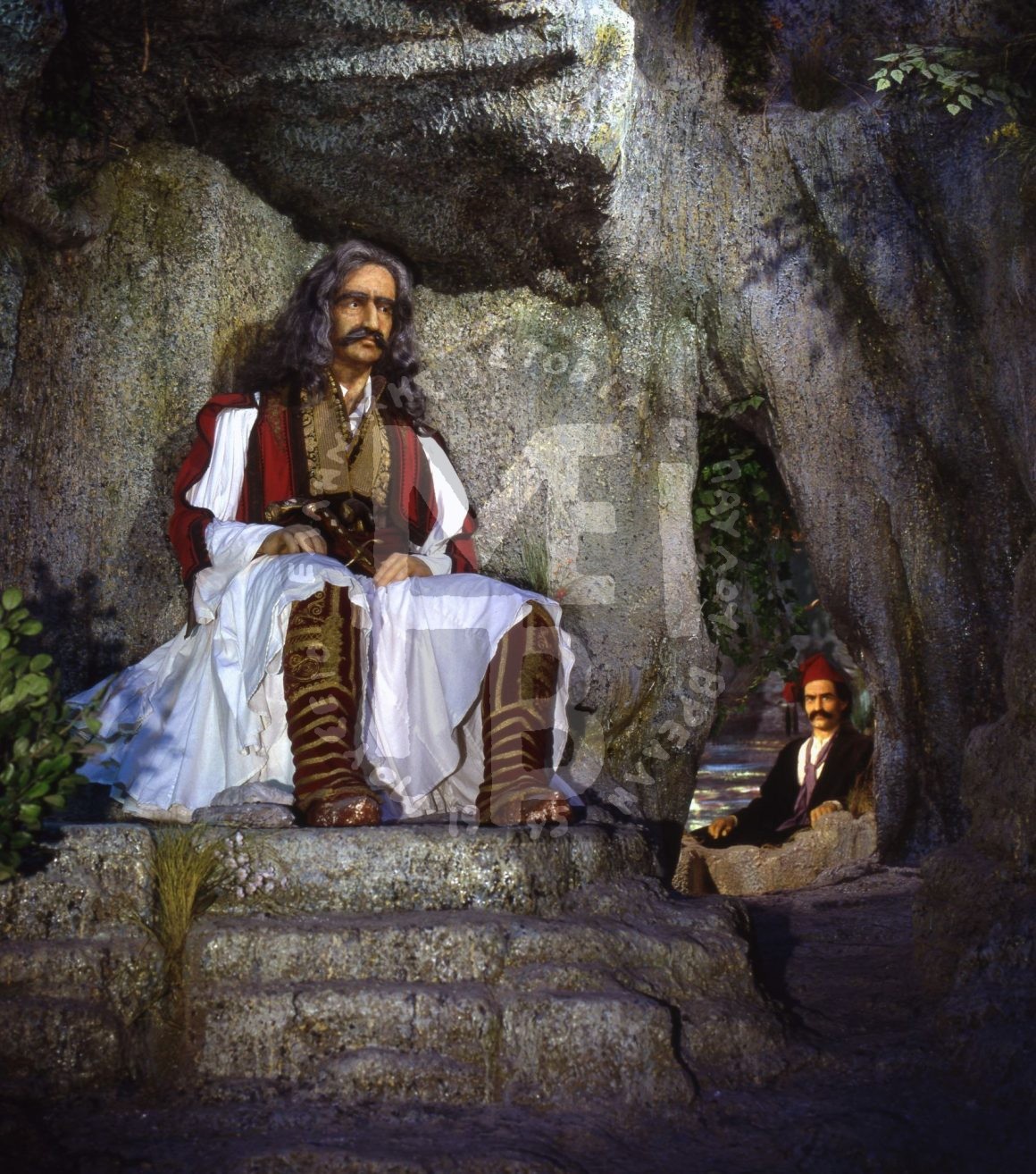“Seventy members of the Kolokotroni family are said to have been killed in fights against the Turks between 1762 and 1806. Theodoros was born in the village of Libovitsi, on Ramovouni Mountain in Messini. He lost his father while still a boy. At a very young age he joined the life of Klephts and at 17 he was a chieftain.
At the hard times of the Klephts, he left to the Ionian Islands, under Venetian occupation at the time. In 1807, he took an active part in the battle of Lefcada Island, when Ali-pasha attempted to conquer it. Later, in 1810 having sided with the English, he took on to organize some of their military forces. He was promoted to the rank of Major due to his bravery. During his stay in the Ionian Islands, he was initiated into the Association of Friends. Being very experienced as a klepht and military, he went to Mani where he started to plan the Revolution. His first act of war was when he gave the first decisive stroke in Valtetsi. Later, after certain systematic actions, he took back Tripolitsa. He had worthy fighters by his side, children and nephews: Plapoutas, Nikitaras, Panos, Genneos, Anthony Kolokotronis and others. With so many valiant men close to him, he crushed the 23,000 foot and 6,000 horse cavalry of Dramalis in Dervenakia. Only 3,500 survived and went to Corinth.
Sad events succeeded those glorious victories. After civil conflicts –drawback reaching our days– they revoked him the rank of Lieutenant General and put him in prison for four months in Hydra, in January, 1825. He was released after Imbrahim’s invasion. While the whole of Peloponnesus were having hard times, he and his men kept fighting their own battles, starting guerrilla warfare which lasted three years. He managed to put a stop to Imbrahim’s plans, until the Sultan was forced to recognize the first independent New Greek State; or else the revolution would have failed. Luckily, a Governmental Committee, headed by Andrew Zaimis, recognized Kolokotronis as Lieutenant General, thus honoring his military genius, prudence and bravery. The contribution of ‘Old Man of Morias’ –as we call him– is mentioned extensively in the pages of Greek history. He is the father of the Victory and Freedom. He began and ended the Revolution of 1821.
Having walked down the sloping corridor, we find ourselves in a small paved room. On the left, I placed the main figure of the composition, the heart and soul of the revolution. He is at the age of 51, after the victory in Valtetsi. He is resting, dignified and contemplative. I have divided the place into various smaller parts, with matching bulk sizes. Here, too, I stress the grey forms with the help of vegetation, the colors of flowers so as to determine the season the first critical battles took place, spring.
The whole décor is made of sackcloth, glues, gypsum, nettings, having unity in variety. I have also created empty spaces –pauses– so that the big sizes would ‘breathe’ with the right openings. Just below this composition is…”

